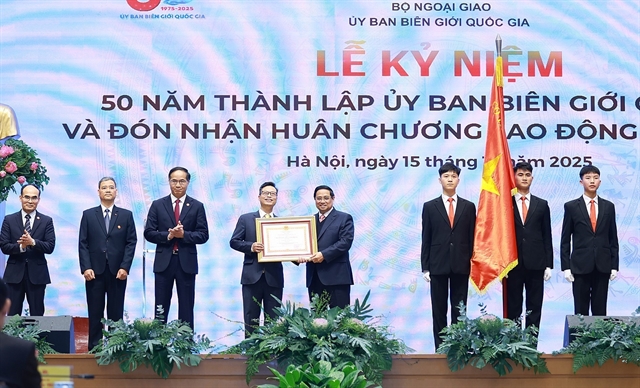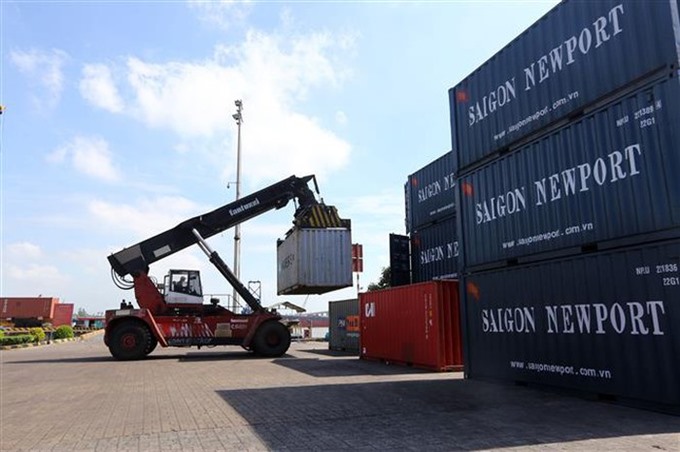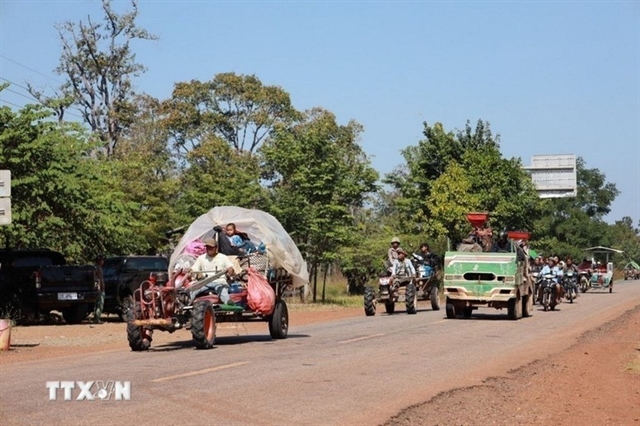 Economy
Economy

Việt Nam faces a possible return to a trade deficit this year after three years of enjoying surpluses, experts said pointing to the sharp rise in imports and increasing difficulties facing exports.
 |
| In January the deficit ballooned to nearly US$1 billion as imports rose by 1.7 per cent to $20.8 billion, according to the General Department of Customs. — VNA/VNS Photo |
Compiled by Thiên Lý
Việt Nam faces a possible return to a trade deficit this year after three years of enjoying surpluses, experts said pointing to the sharp rise in imports and increasing difficulties facing exports.
In January the deficit ballooned to nearly US$1 billion as imports rose by 1.7 per cent to $20.8 billion, according to the General Department of Customs.
Exports were down by 1.3 per cent to $20 billion.
The biggest reason experts think the deficit could be around US$3 billion this year is a sharp increase in import of feedstock and raw materials by many sectors.
According to the Ministry of Industry and Trade (MoIT), imports are likely to increase in sectors whose production is still strongly dependent on imported raw materials and equipment and those performing outsourcing.
They include leather shoes, textile and garment and agriculture processing.
The ministry said the deficit so far this year was mostly due to import of electronic products, fabric, technologies, and components and accessories.
The question is why do Vietnamese enterprises still import such large quantities of materials and equipment?
Nguyễn Đức Thuấn, chairman of the Việt Nam Leather, Footwear and Handbags Association, said the domestic supporting industry in those sectors remain very weak and unorganised and so cannot ensure sufficient supply of high-quality materials and accessories required by manufacturers.
Consequently, leather, footwear and bag companies have no choice but to resort to imports.
This means the country has to cope with global price volatility and production costs increase, which affects the competitiveness of Việt Nam’s exports.
Another and more important reason for the trade deficit this year is the number of free trade agreements including the Comprehensive and Progressive Agreement for Trans-Pacific Partnership (CPTPP) and EU-Vietnam Free Trade Agreement (EVFTA) that have come into force this year.
The agreements have begun to attract investments in many sectors by both local and foreign enterprises seeking to take advantage of the opportunity to sell to the great partner markets.
This also means imports of technology, equipment, accessories, and raw materials are set to accelerate, worsening the trade gap.
On the export front many Vietnamese agricultural and fishery enterprises are facing increasing competition globally.
Analysts said challenges would persist through 2019.
Global sources of supply are expected to increase since more and more countries are entering the supply chain for agricultural products. The increasing production also means many countries are paring down imports of these products and replacing them with local ones.
The increasing supply and dwindling demand will almost certainly keep prices in check meaning export value is unlikely to rise by much.
Experts said while the free trade agreements that Việt Nam has signed would bring opportunities for its companies to export more, it would not be easy to make use of them because exporters are required to meet certain requirements, one of which is the origin of goods.
If Vietnamese firms want to export to partner markets they would have to use locally sourced materials or from countries that are part of the same trade treaty.
Many Vietnamese manufacturers are heavily reliant on imported raw materials from non-partner countries.
The Vietnamese cashew industry, for instance, imports 63 per cent of raw cashew for processing mainly from some African countries like the Ivory Coast, Ghana and Nigeria.
Similarly, furniture markers import more than 39 per cent of their total wood requirements from Laos and Cambodia, which are not part of any of the trade deals.
Vietnamese enterprises would need to look for new sources and obtain proper certificates of origin, experts said.
Power price hikes in the offing: minister
Deputy Minister of Industry and Trade Đỗ Thắng Hải said recently the ministry would consider increasing the price of electricity this year.
The hike would be implemented at an appropriate time and the prices of essential items would gradually be adjusted based on the market.
The ministry had envisaged four scenarios for power price schemes this year, and would submit them to the Government’s Price Management Committee.
Nguyễn Anh Tuấn, head of the ministry’s Electricity Regulatory Authority, said those scenarios were based on the predicted growth rates of electric energy demand and the volume of water received by hydropower plants.
In all scenarios, the total electricity generated from coal-powered thermal plants would increase by 116 million kWh, putting pressure on EVN to hike power tariffs.
The country’s annual growth in electricity demand is above 10 per cent and even higher in some areas.
Việt Nam still relies largely on hydropower and thermal power plants for its electricity needs. Thermal plants are expected to account for over 48 per cent of the power production this year.
An EVN official, who asked not to be named, said while the corporation was capable of supplying enough electricity, pricing was a big problem.
According the the official the output this year is estimated to be 242-243.5 billion kWh and the ministry could mobilise another 2-7 billion kWh from diesel-powered sources at high prices. But its main mission is to ensure sufficient power supply.
Electricity from oil costs nearly VNĐ5,000 ($0.2) per KWh to produce but it is sold to households for just VNĐ1,720 (0.123), which causes a big loss to producers.
Another factor that could affect electricity prices this year is a 5 per cent increase in coal prices that came into effect late last year.
Analysts said coal accounted for a significant proportion of electricity production cost, and so this would exert huge pressure on the power sector.
Deputy Prime Minister Vương Đình Huệ, head of the Steering Committee for Price Management, said power prices should be adjusted in such a way that it is appealing enough to attract investments in electricity production.
But he warned that costs should be controlled by relevant ministries in a transparent manner so that higher tariffs would not come as too heavy a burden on businesses and other consumers. — VNS




